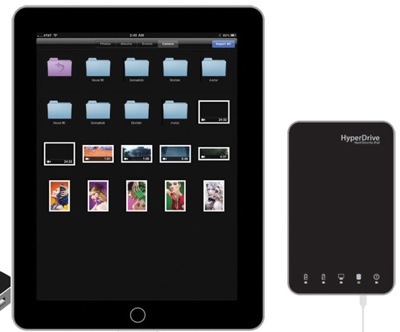An Apple patent (number 20100103172) has appeared at the US Patent & Trademark Office for a system and method for rendering ambient light affected appearing imagery based on sensed ambient lighting. In other words, Apple wants its devices to be more “aware” of the lighting conditions around them.
The patent is for a method for rendering ambient light affected appearing imagery on a two-dimensional display screen in dependence on sensed ambient lighting conditions about the display screen is disclosed. The method includes processing, on a microprocessor in control communication with the display screen, data defining sensed ambient lighting conditions about the display screen, and based on said data, determining at least one light source’s location relative to the display screen and an intensity of light from that at least one light source at the display screen.
The method then includes rendering an image of a constructed scene on the display screen based on the determined location of the at least one light source relative to the display screen and the intensity of light from that at least one light source at the display screen and thereby presenting an ambient light affected image of the constructed scene on the display screen. The inventor is Gregor N. Purdy Sr.
Here’s Apple’s background and summary of the invention: “Consumers have access to a wide variety of electronic devices that have displays such as notebook computers, desktop computers, flat-screen televisions, cell phones and smart phones, among others. These electronic devices may contain an integrated display, such as is the case with many cell phones. Also, many devices such as some desktop and notebook computers are connected to a display such as an external monitor that is connected to the CPU of the computer, but not integrally constructed therewith.
“Some devices of this nature can contain an embedded light sensor capable of sensing ambient light conditions. The information is typically used to make brightness adjustments to the display based on the sensed ambient light level. For example, a device may automatically increase the brightness level of an associated display screen in a strong, bright ambient light environment. Similarly, the same device may automatically lower the brightness level of the display screen when a dim ambient light environment is detected. Adjusting the brightness of a display screen in this manner based on ambient light intensity is intended to result in a better viewing experience for the user, and it can as well provide power saving benefits, for instance when the power to the display is decreased during dimming.
“This disclosure appreciates the fact that imagery is typically presented on display screens of all types, including those types described above. In order to make the images more engaging, it has also been appreciated that if more specific sensed ambient lighting conditions (direction, intensity, color and the like) could be applied to the imagery, those images would be more realistic in appearance, and therefore more natural and pleasing to the viewer. Among other enhancements, characteristics of the imagery could be altered in view of actual ambient lighting conditions around the device. For example, the shading or brightness of the imagery could be made to correspond to the ambient light characteristics around the display screen.
“As an example, if a user is looking at a display of a notebook computer positioned on a desk and a lamp is positioned to the right of the notebook (see the graphic), it would be much more realistic if imagery on the display such as icons, windows and other graphical user interface elements were adapted to appear as though that shining lamp was affecting their appearance. In this context, the icons, windows and other graphical user interface elements would appear as though the light from the lamp on the desk was actually also shining on them. This can be accomplished by, among other things, altering the shading of the images to add shadow effects away from the light source and to add brightness effects toward the light source.
“Therefore, the present disclosure capitalizes on these lighting-induced naturally occurring effects that users have come to expect in the real world by adjusting the presentation of displayed images in dependence on the sensed ambient lighting conditions about the display screen. Among others, the sensed lighting characteristics can include direction, magnitude and color from multiple light sources that would affect the appearance of objects located where the display screen is positioned.
“… This disclosure describes a system and method for rendering ambient light affected imagery on a display screen based on sensed ambient lighting conditions. Systems, methods and computer readable media are disclosed for rendering such ambient light affected imagery based on sensed lighting conditions around the display. In a most basic sense, the present system presents images on a display screen in a way that mimics how ambient light would affect the appearance of the represented articles in the images if actually present.
“Using the example above of viewing a notebook display screen positioned on a desk with a lamp on the desk to the right of the notebook, the presently disclosed system and method presents images on the screen that correspond more realistically to what would be seen if the ambient lighting about the display were also affecting the articles being shown on the screen. Among other things, the direction of incidence, color, and strength of light emitting from one or more light sources near the display screen can be sensed and assessed, and then the images presented on the display screen can be correspondingly adapted to mimic the existing lighting effects.
“Similar to the computer/lamp example above where one light source is considered, the present disclosure also contemplates sensing and assessing lighting information about multiple light sources that each bear on the display screen. For example, the lamp to the right of the computer will affect the display screen. Furthermore, an overhead incandescent light could also affect the display screen. Additionally, the user can have a candle burning to the left of the notebook screen.
“The sensors in this example would collect information (detect lighting conditions) and output data representative thereof which when processed, allows the system to determine the direction of incidence and brightness of light at the respective sensor, and based thereupon, present images on the display in correspondence therewith. In this manner even the flickering effect from the candle can be reflected in the presentation of the imagery on the display screen. Similarly, if one of the light sources is turned off, such as the lamp to the right of the notebook in this example, the resulting effect can be simultaneously reflected in the presentation of the imagery on the display.
“Aspects of the method disclosed herein and the principles associated therewith are also applicable to the system and computer readable medium embodiments that are also described. Accordingly, a method for rendering ambient light affected appearing imagery on a two-dimensional display screen in dependence on sensed ambient lighting conditions about the display screen is disclosed. The method includes processing, on a microprocessor in control communication with the display screen, data defining sensed ambient lighting conditions about the display screen, and based on that data, determining at least one light source’s location relative to the display screen and an intensity of lighting from that light source at the display screen.
“The method then includes rendering an image of a constructed scene on the display screen based on the determined location of the one or more light source(s) relative to the display screen (which can be assessed based on the angle of incidence of light detected at the sensor) and the intensity of light from the source(s) at the display screen in order to present an ambient light affected image of the constructed scene on the display screen.
“Exemplarily, the method can include adding shadow effects to the constructed scene based on the determined location of the light source(s) relative to the display screen and the intensity of light from the light source(s) at the display screen.
“The method can also include adding highlight or brightness effects to the constructed scene based on the determined location of the light source(s) relative to the display screen and the intensity of light from the light source(s) at the display screen.
“The method can also include adding both shadow effects and highlight effects to the constructed scene based on the determined location of the light source(s) relative to the display screen and the intensity of light from the light source(s) at the display screen.
“As described, the method can include determining, for a plurality of light sources, each light source’s location relative to the display screen and an intensity of lighting from the source at the display screen and rendering the image of a constructed scene on the display screen based on the determined locations of the plurality of light sources relative to the display screen and the intensity of light from each of the light sources at the display screen.
“The method can include utilizing one or more detectors to sense the ambient lighting conditions about the display screen and output data defining sensed ambient lighting conditions about the display screen.
“In this embodiment, the one or more detectors can be utilized to sense a lighting-induced ambient color hue about the display screen and output data defining the sensed ambient color hue about the display screen. In this regard, the method can responsively include adding a color cast to the constructed scene based on the sensed lighting-induced ambient color hue detected about the display screen. For instance, if a red hue is detected, possibly from a red-colored light, a similar red color can be cast on the imagery displayed on the screen for uniformity with the surroundings.
“The detector can utilize, for example, light sensing semiconductor devices such as a photocell, photodiode, phototransistor, charge coupled device (CCD) or complementary metal oxide semiconductor (CMOS). Additionally, the detector can utilize a vacuum tube device such as photo-electric tube or photomultiplier tube to detect the lighting characteristics. However, the system and method applies to all display screens, including those incorporated on portable computing devices or combination of devices that allow rendering ambient light affected appearing imagery on a two-dimensional display screen in dependence on sensed ambient lighting conditions about the display screen.”





